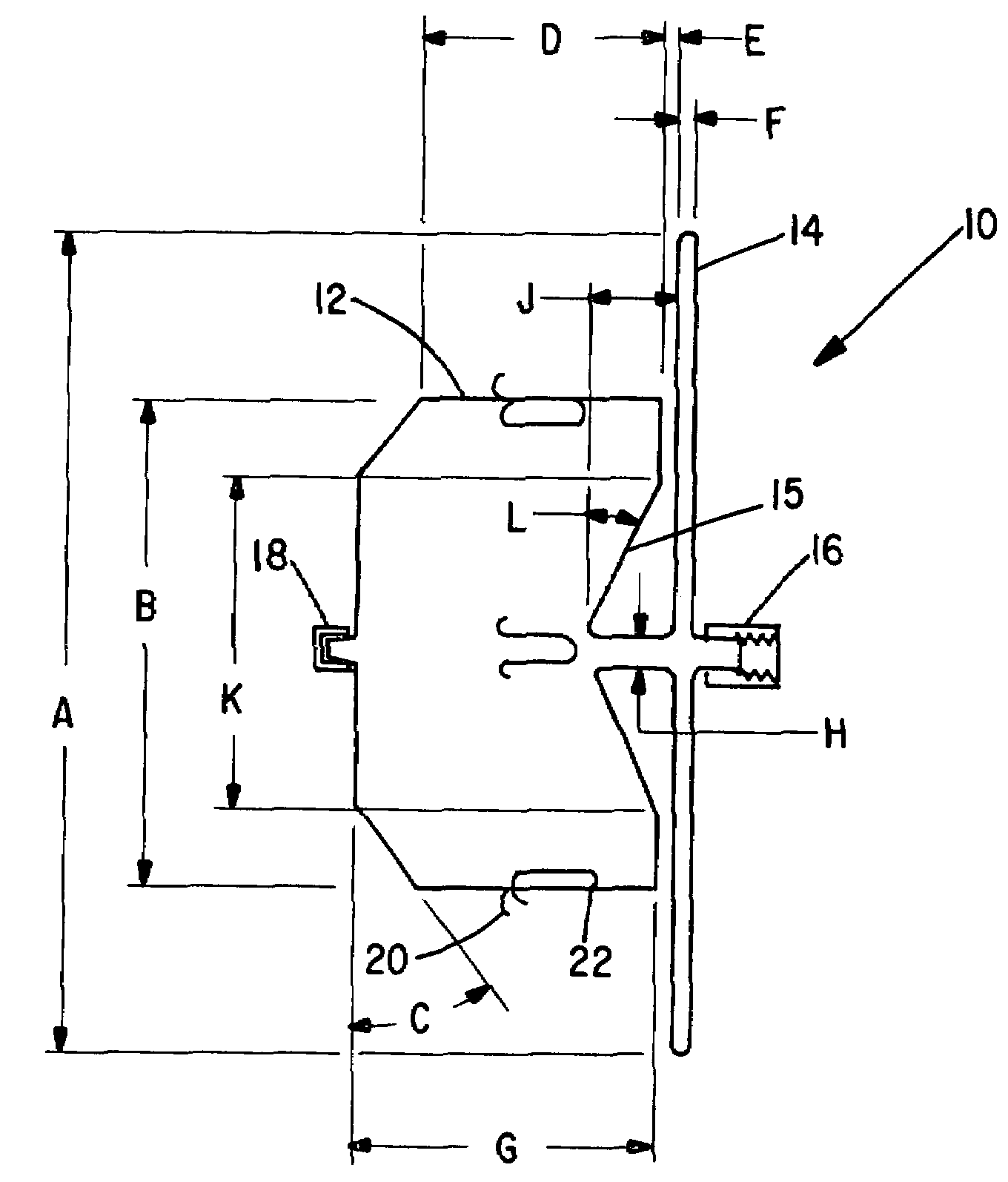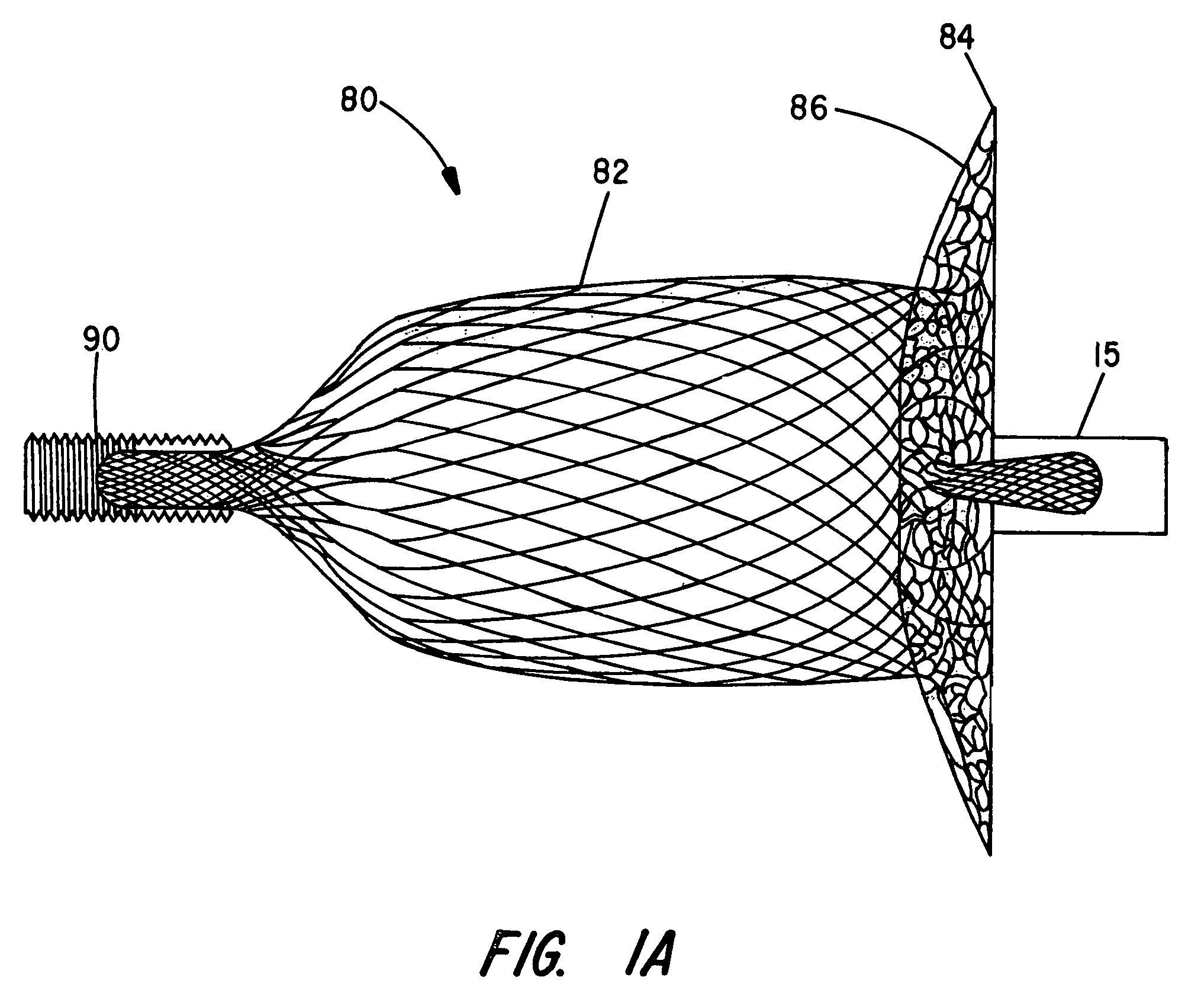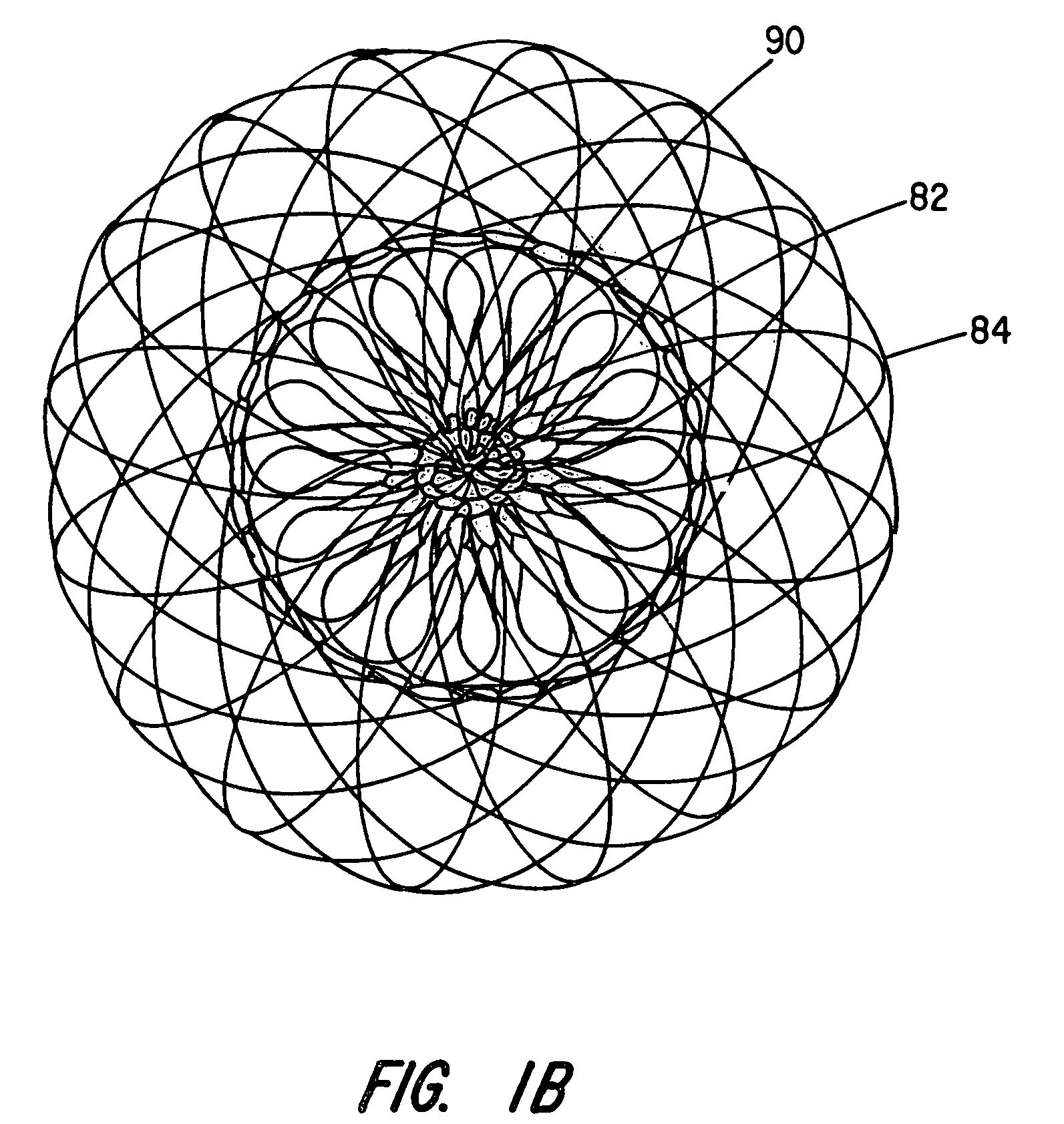Percutaneous catheter directed intravascular occlusion devices
a technology of intravascular occlusion and percutaneous catheter, which is applied in the field of intravascular occlusion devices, can solve the problems of insufficient retention force, gaps between disk portions and vessel walls, and prior art devices that do not align themselves as well as possible to the anatomical conditions, etc., and achieves small transition diameter, easy flexibility, and improved flexibility.
- Summary
- Abstract
- Description
- Claims
- Application Information
AI Technical Summary
Benefits of technology
Problems solved by technology
Method used
Image
Examples
Embodiment Construction
[0029]The present invention provides an improved percutaneous catheter directed intravascular occlusion device for use in the vasculature in patients' bodies, such as blood vessels, channels, lumens, a hole through tissue, cavities and the like. In forming a medical device of the invention, a metal fabric is formed of a plurality of wire strands having a predetermined relative orientation between the strands.
[0030]The metal strands define two sets of essentially parallel generally helical strands, with the strands of one set having a “hand”, i.e. a direction of rotation, opposite that of the other set. This defines a generally tubular fabric, known in the fabric industry as a tubular braid. The Amplatz and Kotula patents previously discussed describe medical devices and the methods of fabrication of such devices in great detail and detailed further discussion is not needed.
[0031]The pitch of the wire strands (i.e. the angle defined between the turns of the wire and the axis of the b...
PUM
 Login to View More
Login to View More Abstract
Description
Claims
Application Information
 Login to View More
Login to View More - R&D
- Intellectual Property
- Life Sciences
- Materials
- Tech Scout
- Unparalleled Data Quality
- Higher Quality Content
- 60% Fewer Hallucinations
Browse by: Latest US Patents, China's latest patents, Technical Efficacy Thesaurus, Application Domain, Technology Topic, Popular Technical Reports.
© 2025 PatSnap. All rights reserved.Legal|Privacy policy|Modern Slavery Act Transparency Statement|Sitemap|About US| Contact US: help@patsnap.com



